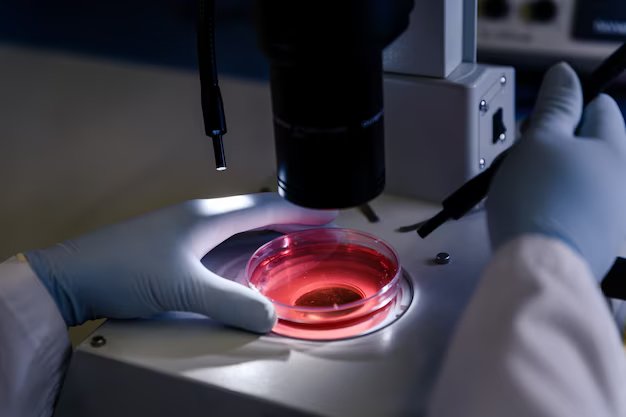Automated AI-Powered Microscope Accurately Identifies Malaria Parasites in Blood Samples
Posted on 11 Aug 2023
Every year, over 200 million individuals contract malaria, with more than half a million of these cases resulting in fatalities. The World Health Organization advocates for the use of parasite-based diagnosis prior to commencing treatment for the infectious disease caused by Plasmodium parasites. Various diagnostic techniques are available, including conventional light microscopy, rapid diagnostic tests, and PCR. Nevertheless, the established benchmark for malaria diagnosis is manual light microscopy, where a specialist examines blood samples under a microscope to verify the presence of malaria parasites. However, the result accuracy is heavily dependent on the expertise of the microscopist and can be affected by fatigue caused by workloads among the professionals conducting the tests.
Due to the demanding nature of traditional diagnosis and the high workload, an international team of researchers undertook an investigation into the feasibility of employing a novel system that combines an automated scanning microscope with artificial intelligence (AI) for clinical diagnosis. The results indicated that this system identified malaria parasites with almost the same accuracy as experienced microscopists following standard diagnostic procedures. This advancement holds the potential to ease the burden of microscopists and increase the manageable patient caseload.

Researchers at The Hospital for Tropical Diseases at UCLH (London, UK) tested a fully automated malaria diagnostic system comprising both hardware and software components. The automated microscopy platform scans blood samples, and algorithms for malaria detection process the images to detect the presence and quantity of parasites. The researchers analyzed more than 1,200 blood samples from travelers who had returned to the UK from regions where malaria is prevalent. The study evaluated the accuracy of the AI-microscope system in a true clinical setting under ideal conditions.
The researchers compared the results obtained from both manual light microscopy and the AI-microscope system. Manually, 113 samples were identified as having malaria parasites, whereas the AI system accurately detected 99 positive samples, resulting in an 88% accuracy rate. Despite this commendable accuracy rate, the automated system also produced false positives, indicating 122 samples as positive when they were not, potentially leading to unnecessary administration of anti-malarial drugs to patients.
“At an 88% diagnostic accuracy rate relative to microscopists, the AI system identified malaria parasites almost, though not quite, as well as experts,” said Dr. Roxanne Rees-Channer, a researcher at The Hospital for Tropical Diseases at UCLH. “This level of performance in a clinical setting is a major achievement for AI algorithms targeting malaria. It indicates that the system can indeed be a clinically useful tool for malaria diagnosis in appropriate settings.”
Related Links:
UCLH














